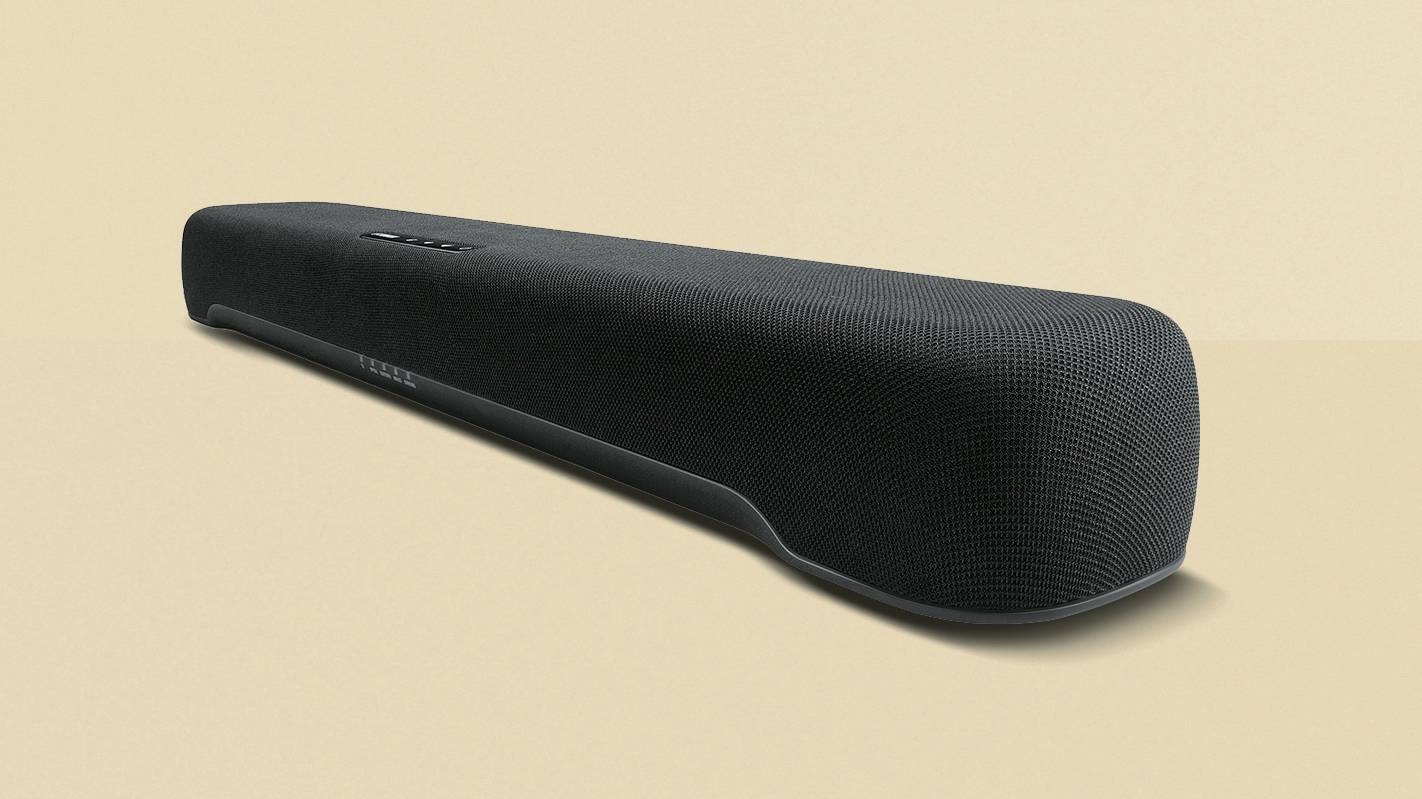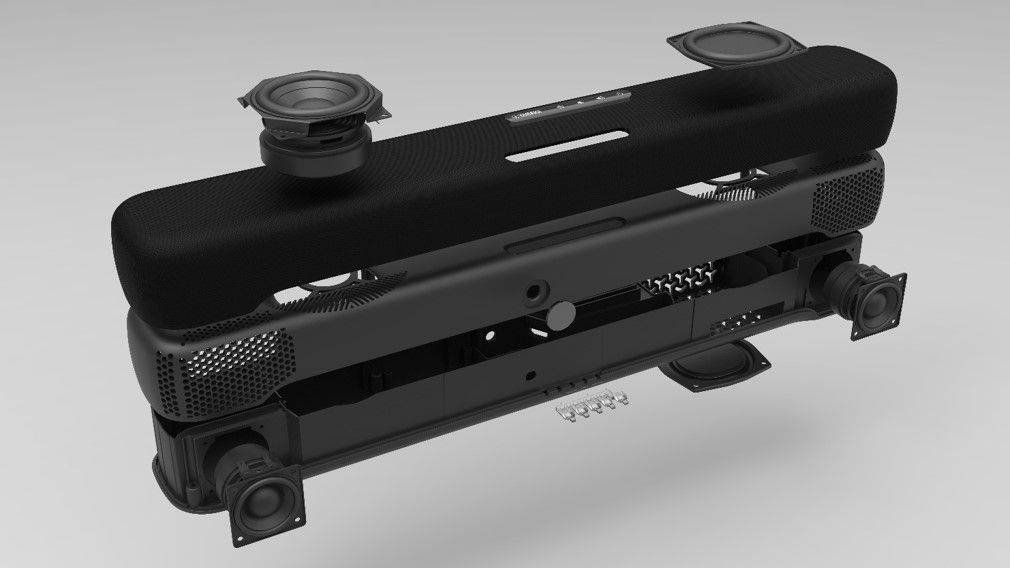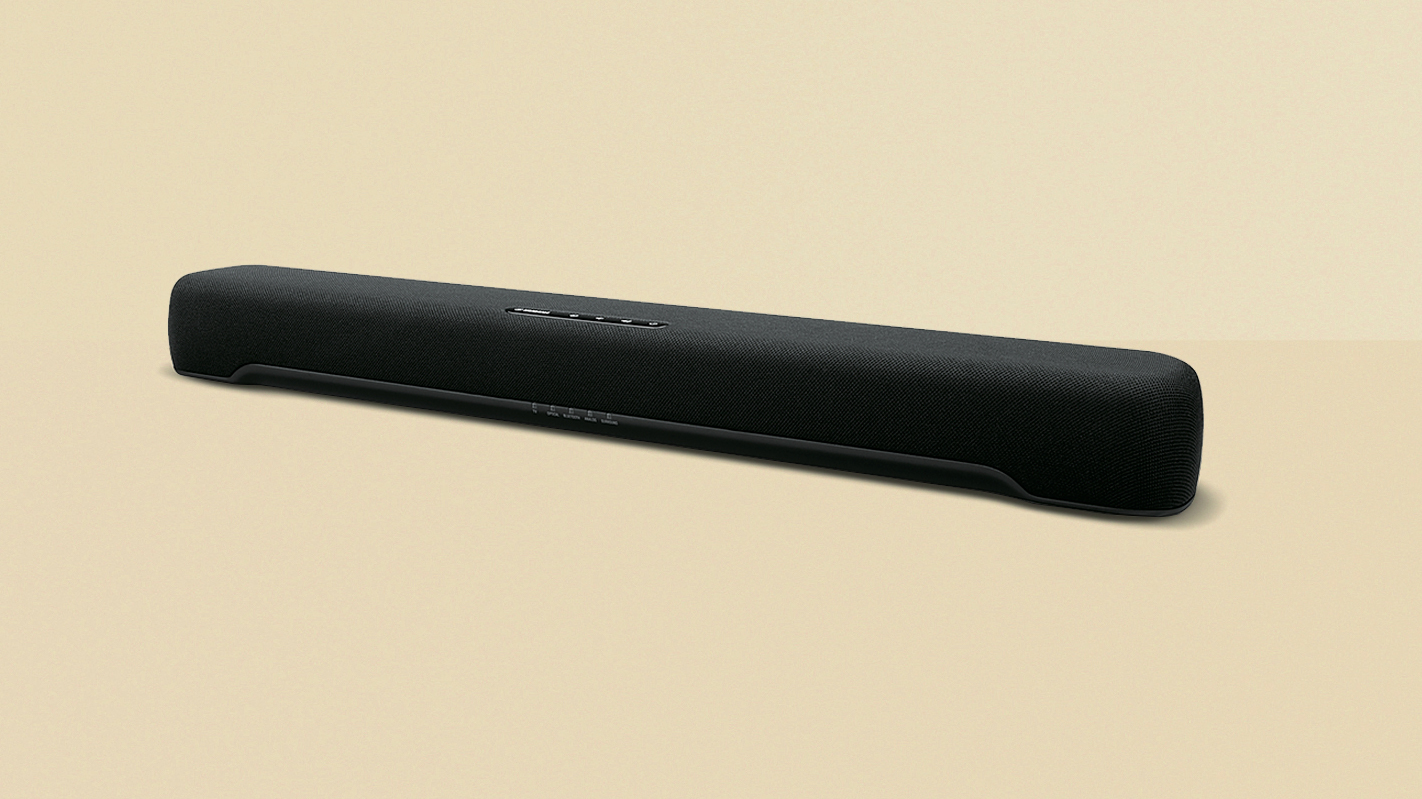Yamaha SR-C20A review: the best cheap soundbar?
Yamaha's SR-C20A has a can-do attitude, compact frame and truly impressive audio quality. Is anything missing?


The Yamaha SR-C20A is a soundbar that can do a bit of everything without getting in your way. It's a real winner at this price point.
-
+
Broad, balanced sound from any source
-
+
Compact dimensions make for positional flexibility
-
+
Fine control app
-
-
Gets quite flustered by big volume
-
-
Rather unpleasant remote control
Why you can trust T3

Welcome to T3's Yamaha SR-C20A review – our look at one of the most impressive small, cheap soundbars available. Why? Well, a fundamental question first: what do you want a soundbar for?
The two most popular answers tend to be: to improve my TV’s sound when I’m watching movies; and to improve my monitor’s sound when I’m gaming. There’s also a slightly more esoteric answer: to use as a music speaker.
What you want is something that’s small and unobtrusive, easy to move and position, and with more flexibility in the way it presents sound than is automatically the case with most of the best soundbars. But what you may want, in fact, may well be the Yamaha SR-C20A – which is also a brilliant option as one of the best soundbars for Samsung TVs.
Yamaha SR-C20A review: Price & features

At £229/$179/AU$315, the SR-C20A is the smallest and most affordable soundbar in Yamaha’s entire line-up – the latest price from online retailers is shown just below. Mind you, ‘affordable’ is a relative term, especially where electronics are concerned – and there are any number of companies lining up to sell you a (theoretically) similar device for significantly less money than this. Whether any of them are as compact and strong-sounding as this is another matter.
It’s not as if the Yamaha is particularly lavishly specified, either. Oh sure, it’s fair to say that 100 watts of Class D power, driving two forward-facing 46mm full-range drivers and an upward-firing 75mm bass driver, is not to be sniffed at. A couple of 75mm passive radiators offering some bass reinforcement is good news too.
And the suite of connectivity – an HDMI ARC socket, a couple of digital optical inputs, a 3.5mm analogue input and Bluetooth 5.0 wireless connectivity – should be ample for the majority of prospective customers. It’s just that it doesn’t particularly stand out for the price – cheaper options will tick a lot of the same boxes.
But let’s not forget this is Yamaha we’re talking about. The company pretty much wrote the book on soundbars, and it seldom misses the mark with products like this.
Get all the latest news, reviews, deals and buying guides on gorgeous tech, home and active products from the T3 experts
Yamaha SR-C20A review: Sound quality

We’ve already established that the SR-C20A, thanks to its small dimensions, light weight and very businesslike specification, is designed to do a job in any and all circumstances. Which is pretty much how it proves.
Connected to a TV via the HDMI ARC socket, the Yamaha is a far more spacious, well-defined and sturdier listen than any TV that doesn’t have a bespoke integrated speaker array (which is pretty much all of them, especially if you're looking at TVs under £1000 or TVs under $1000). There’s definite width and even a suggestion of height to the sound it serves up.
Detail levels are high, and even at the bottom of the frequency range the Yamaha differentiates textures and tones well – which by no means a given in soundbars at the sort of money, regardless of their driver array. At the opposite end there’s plenty of bite and substance to treble sounds, but no lack of poise or dexterity. And in the midrange, where the overwhelming majority of a movie soundtrack exists, there are similar levels of refinement and attack. There’s always a balance to be struck, sonically speaking, and the SR-C20A strikes it dead centre.
Switch to the soundtrack of a console game – any game – and the Yamaha has the dynamic headroom to make the most of it. The ability to switch, sonically speaking, between ‘stealth’ and ‘shock and awe’ is important in games of all types, and the SR-C20A is deep-breathing enough to put proper distance between those two states. And as with its movie reproduction, the soundstage it creates is big enough and, crucially, well defined enough to make a sonic layout obvious.
Broadly speaking it’s equally successful when listening to music. Detail levels are good, staging is convincing and the frequency range is nicely integrated. There’s a shortage of rhythmic certainty here, mind you, and it can make the SR-C20A sound a bit ungainly when musical rhythms and tempos get even mildly complex.
A good deal of the Yamaha’s poise abandons it when you start to really crack the volume, though, and its confidence is replaced by a rather haphazard rush to get all the information to the front of the stage. If it’s out-and-out volume you’re interested in, you may want to cast your net a little wider.
In most everyday circumstances, though, the Yamaha has enough across-the-board talent to make it a leader for the price.
Yamaha SR-C20A review: Design & usability

A big part of the SR-C20A’s charm lies in how small it is: at just 600x64x94mm (23-5/8x2-1/2x3-3/4 inches) it looks like a scale model of a soundbar. It’s plenty compact enough to sit happily beneath even quite small screens without getting in the way – it's not even as wide as the average 32-inch TV, let alone 43-inch TVs or bigger. At less than 2kg, it’s hardly a burden to move from room to room as you desire, either.
The finish as you’d expect from Yamaha, is more than acceptable. The acoustic cloth that covers most of the soundbar is flawlessly applied, the plastics are sturdy, and everything is fitted and finessed smoothly.
There are a few touch-sensitive control on the top of the SR-C20A, and they’re accompanied by some LED tell-tales giving information regarding input and volume level. There’s a full-function remote control in the box too – it has everything you need, including independent controls for subwoofer level and overall volume. But it’s by far the cheapest-feeling thing about the Yamaha, so while it’s useful, it’s basically the opposite of glamorous. Of course, most people will look to control it with their TV's remote over HDMI anyway.
The nicest way to get the SR-C20A to do what you want is to use Yamaha’s impressive SB Remote app (free for iOS and Android). It’s logical, uncomplicated and works consistently – which ought to be a given with control apps but, as we all know, isn’t. So Yamaha is ahead of any number of nominal competitors in this respect.
Yamaha SR-C20A review: Verdict

You’re not short of choice when it comes to very acceptable soundbars in this kind of price range and lower. But the SR-C20A creates a little niche for itself by being so usefully compact and so very adept across the board.
As long as you don’t want a soundbar that’s happy to shake the room with sheer volume, this is an incredibly strong option to boost the weedy audio of a budget TV into something altogether more accomplished.
Simon Lucas is a freelance technology journalist and consultant, with particular emphasis on the audio/video aspects of home entertainment. Before embracing the carefree life of the freelancer, he was editor of What Hi-Fi? magazine and website – since then, he's written for titles such as Wired, Metro, the Guardian and Stuff, among many others. Should he find himself with a spare moment, Simon likes nothing more than publishing and then quickly deleting tweets about the state of the nation (in general), the state of Aston Villa (in particular) and the state of his partner's cat.
